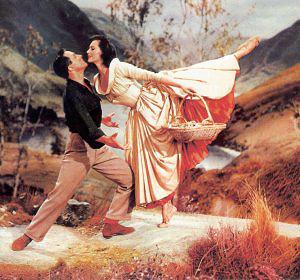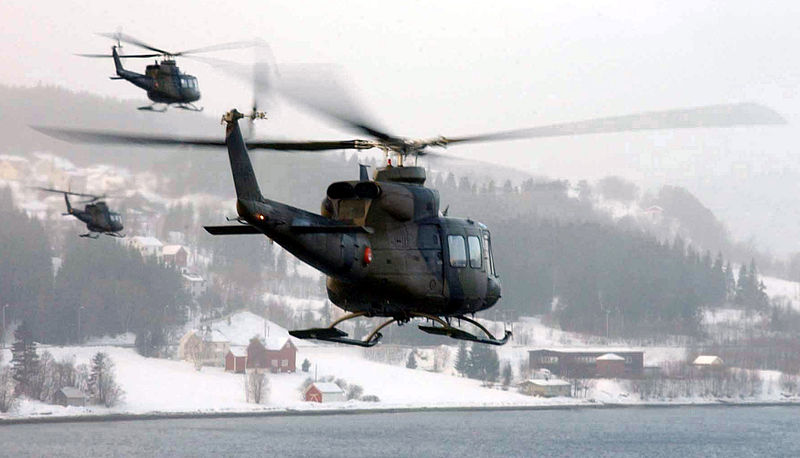MacCruiskeen wrote:You know this? No.
You know this? No.
You know this? No.
You know this? No.
I'd forgotten I wanted to respond a bit to this interestingly repetitive post of Mac's.
...civilian choppers were available in their hundreds, including big robust personnel-carrying ones. See my first three or four posts for the evidence.
What I'd like to examine is just how much time responders might have saved by using a commandeered civilian helicopter. Let's use the wikipedia timeline for purposes of standardisation, even though there are others that suite my purposes better:
17:07: Breivik arrives at Utøya, where he asks the young people present to gather around him for information.[8] Shortly after arriving on the island, he starts firing at bystanders.[9] Initial calls to the emergency services are dismissed in order to keep the line clear for calls about the Oslo bomb.[13][14]
17:27: The local police district in Buskerud learn about the shooting, and three minutes later the police in Oslo are informed.[10]
So here is the point (17:30) at which the police in Oslo might begin checking for the availability of their standard chopper, from the 330 squadron, and find out it is unavailable, for whatever reason.
17:38: Northern Buskerud police district ask Oslo police district for assistance.[15] Beredskapstroppen (the Contingency Platoon) is dispatched from Oslo to Utøya.[10]
IRL, the Beredskapstroppen have left by car from Oslo, eleven minutes after they found out about the incident. My question would be, in those eleven minutes, could they have located a civilian chopper to carry the troops and equipment and organised the pickup of their men and material? I'm very doubtful. Even of they located an available civilian chopper within five or ten minutes, it would have to be prepped. Prep to lift-off is usually fifteen to thirty minutes, but let's say it might be unsafely done in ten. So the civvie chopper is still on the ground at where ever they located it by the time the Beredskapstroppen leave for Utoya. At the very best, we're now fifteen minutes (5 mins. to locate, + 10 minutes to prep) from the point at which the Oslo police began checking for civilian helicopters, which puts us at 17:45, the chopper is still on the ground at it's home airport.
Now it has to lift off, go where the elite troops are, land, and load the men and material. Let's say that the civilian pilot can do this is ten minutes or so. That seems amazingly fast, but okay. Now we are at 17:55 in our hypothetical and finally leaving Oslo.
17:52: The first local police car arrives at Tyrifjorden, but the officers have to wait for a suitable craft before they can cross over to Utøya.[12]
18:09: The Contingency Platoon arrive, but are also forced to wait for a boat.[9]
Alright, IRL, the Beredskapstroppen are at the lakeshore, aimlessly boat-hunting. It's 38 kilometers from Oslo to Utoya, so the trip by copter at 200 km/hr average speed takes between 10 and 15 minutes. In other words, 18:10, and the civilian chopper is now hovering and beginning to lower the platoon members onto the island, for a total savings of fifteen to twenty minutes, because at...
18:25: The Contingency Platoon arrive on Utøya and go ashore.[11]
I think I've been
extremely fair in my alotments of time for each phase of this comparison against the wiki timeline, and have condensed or even omitted aspects of the logitistics of commandeering civilian aircraft which might be faced, such as chain of command issues, and other contingencies. If you disagree, tell me how, so I can reassess. (Whether the wiki timeline is really accurate is another discussion.)
Now consider that the Beredskapstroppen are really only late to the scene in real life because of the problems finding a boat. Had a servicable boat been available, they would have very nearly arrived at the island at the same time as a similar crew choppered in from a civilian source, or so it would seem from this exercise. In other words, the decision to drive doesn't seem so bad, and if you're looking for a place to lay the blame for their lateness, the boat is probably a more reasonable suspect than the fact that they chose to drive to Utoya, at least within the terms of the possible use of a commandeered civilian helicopter. I'd say even subtracting five or ten minutes from the hypothetical helicopter timeframe doesn't turn driving into a really horrifyingly bad decision.
The most dangerous traps are the ones you set for yourself. - Phillip Marlowe





